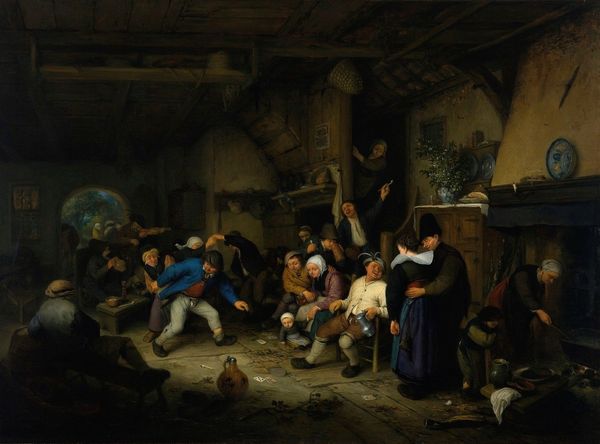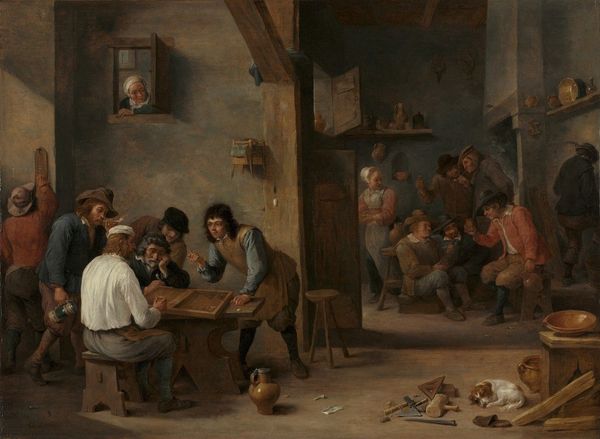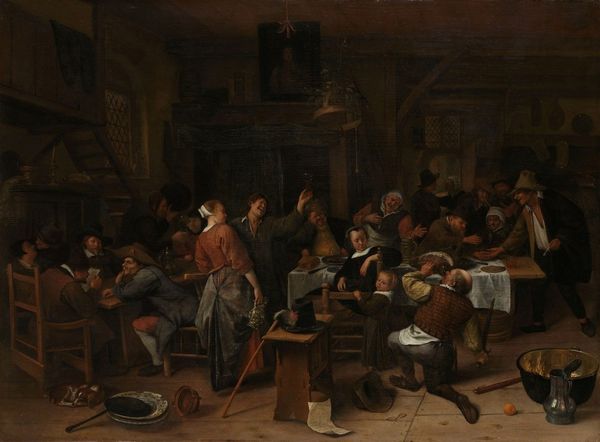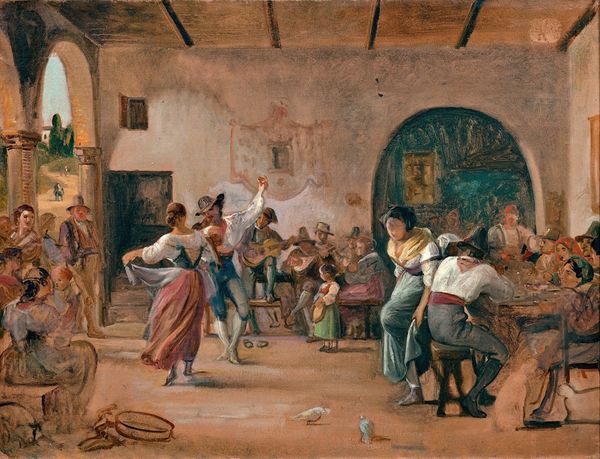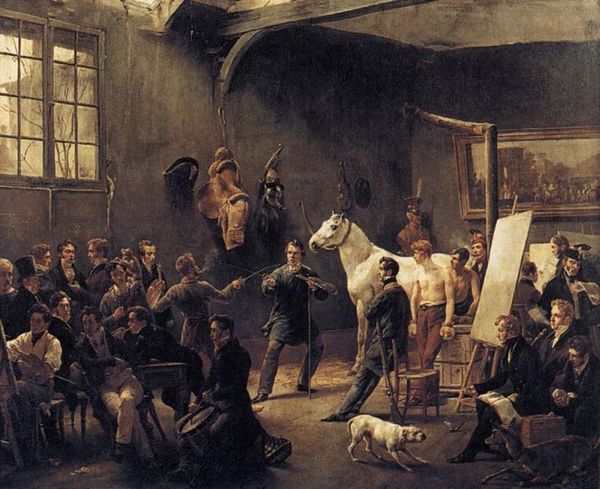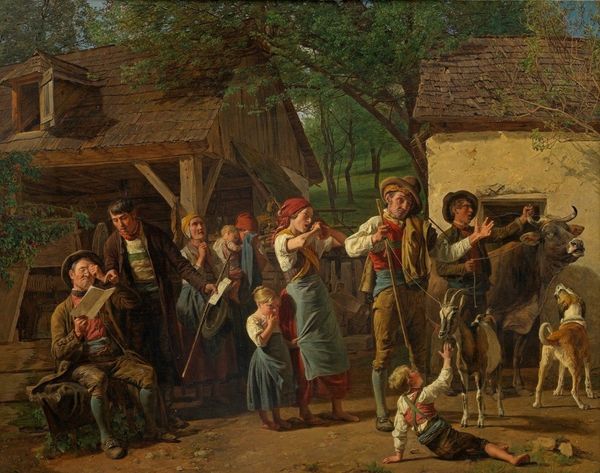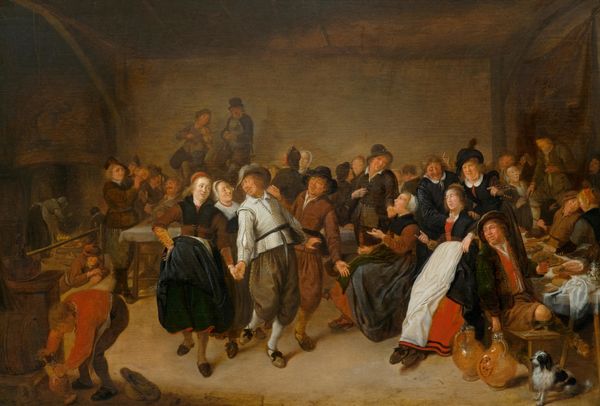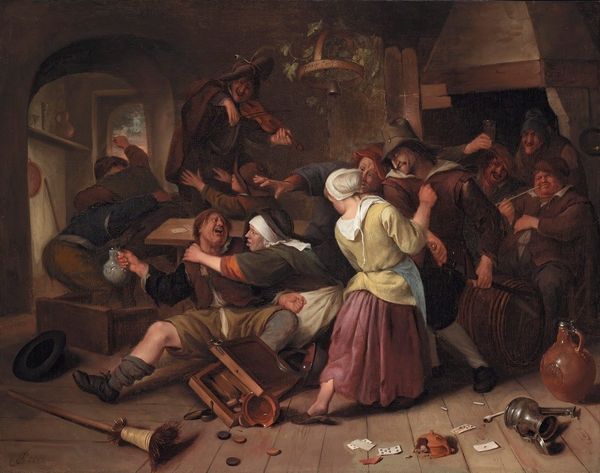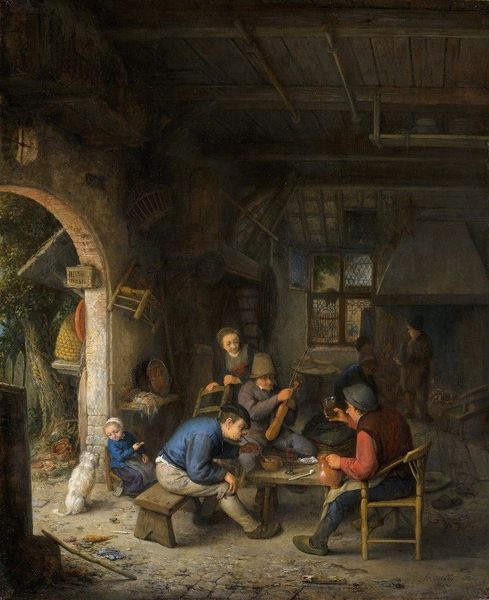
painting, oil-paint
#
portrait
#
baroque
#
dutch-golden-age
#
painting
#
oil-paint
#
genre-painting
Copyright: Public Domain: Artvee
Curator: Adriaen van Ostade, a Dutch Golden Age painter, created "Merrymakers in an Inn" in 1674 using oil paint. Look at the scene, painted almost four centuries ago! Editor: My first thought is “raucous.” It feels so earthy, immediate. You can almost smell the ale and hear the fiddle scratching away. Curator: The texture here, the visible brushstrokes… It all speaks to the materiality of creating images for consumption within Dutch society. Consider how this artwork circulated; was it bought outright, bartered for, commissioned? It depicts an economy of leisure itself, of course. Editor: It’s a snapshot, isn’t it? One of those nights that just bubbles over with laughter, awkward dances, and spilled drinks. Van Ostade really nails the clumsy joy of it all. I bet everyone in the scene would claim they remember that exact night. Curator: These scenes also invite examination of labor practices and class dynamics in the Dutch Golden Age. Even joy and celebration have their socio-economic contexts, impacting everything from the quality of pigments used to the patron's status, influencing the artwork's longevity. Editor: I think what strikes me is how relatable it feels. Sure, the costumes and the interior might seem foreign, but the expressions? The postures? That’s universal. That’s pure, distilled humanity. And what happened to all that stuff all over the floor, anyway? Is that food or just rubbish? Curator: Note that he used brown and ochre tones prevalent, indicative of the pigments readily available, making color an accessible and material concern of creation. These artistic choices shaped how individuals perceived leisure itself during the Dutch Golden Age, offering insights into its broader impact. Editor: So, we started by talking about materiality, didn't we? How pigment becomes place, people... feeling. Even though the context might shift and our focus can drift, it comes back to those initial strokes, that choice to apply color to canvas in the first place. It really does start there, doesn’t it? Curator: Absolutely, because it reminds us art is made, not just conceived, offering historical grounding beyond representation.
Comments
No comments
Be the first to comment and join the conversation on the ultimate creative platform.
